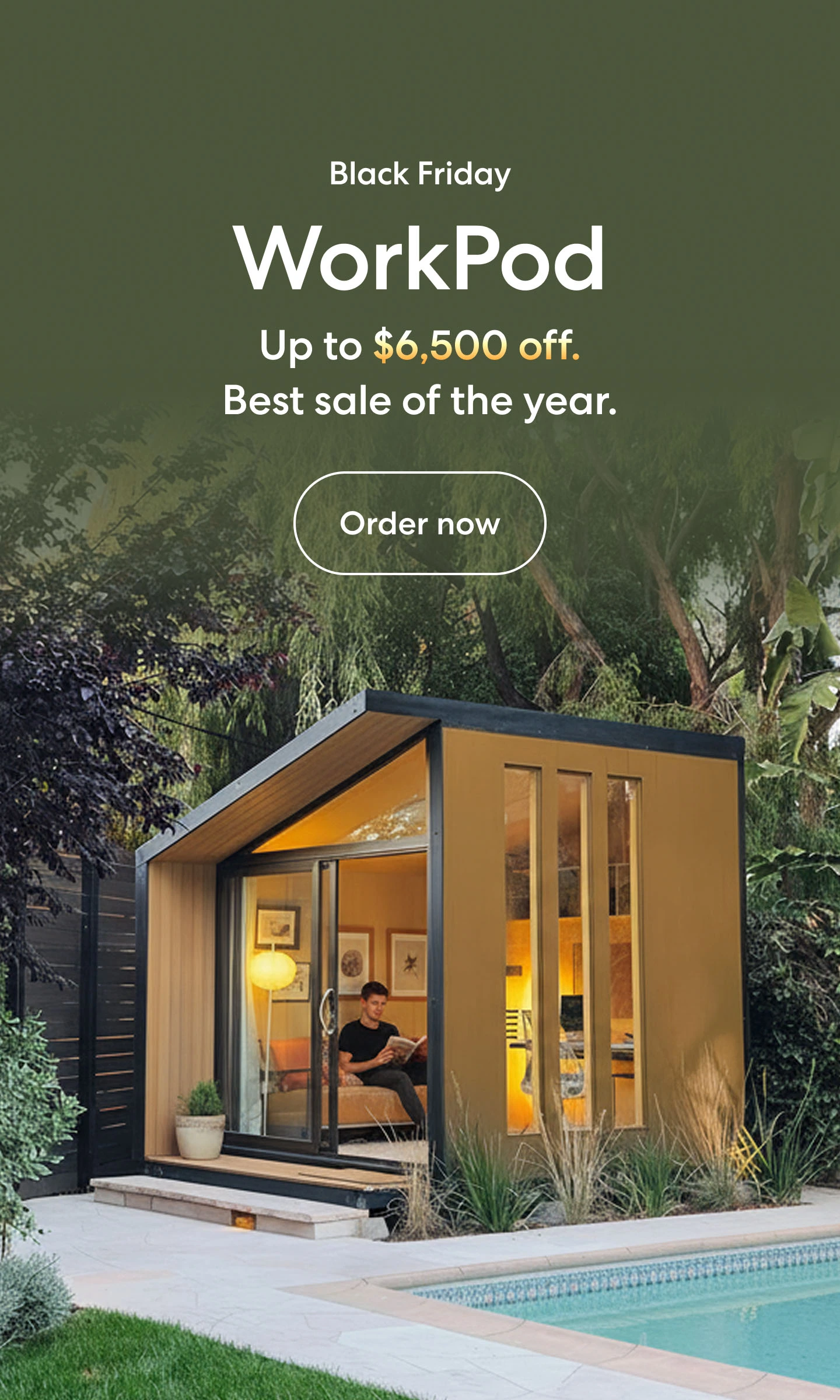
ADU vs. Tiny House: Which One Fits Your Lifestyle and Budget?
Table of Contents
Homeowners are becoming inventive with their houses to meet the increasing need for alternative housing options. Adding an accessory dwelling unit (ADU) or tiny house is one way people are modifying their lifestyle or raising the value of their property.
However, one thing that many people are realizing as the alternative housing market expands is that ADUs and tiny houses aren't the same thing. So, let's explore the key distinctions between a tiny home vs. ADU that any homeowner or prospective homeowner should be aware of.
ADU vs. Tiny House: What Is an ADU?
An ADU is a self-contained residential unit that shares a lot with a main house, duplex, or multi-family building. Typically, an ADU should have its door, bathroom, kitchen, and living space in order to qualify. However, there are many various ways to construct an ADU to suit a wide range of housing requirements. You can utilize your ADU as a backyard office, rental, backyard guest house, etc.
Here are some benefits of ADUs:
- Maximize the potential for rising property values and rental income.
- Facilitate multigenerational living arrangements or housing for caregivers.
- Eco-friendly ADU designs are a great way to live a sustainable lifestyle.
- Increase the variety and affordability of community housing.
ADU vs. Tiny House: What Is a Tiny Home?
The standard footprint of a tiny house is less than 400 square feet. Tiny houses can also be constructed on wheels or trailers for easy transportation. When stationary, tiny homes are typically parked on their own plot of land separate from other structures.
Here are some benefits of tiny houses:
- Reasonable price: Spend less on setup and less on upkeep.
- Minimalist Lifestyle: Tiny homes let you declutter your life and give attention to the really important things.
- Mobility and Flexibility: They provide the capability to move about easily and adjust to new situations.
- Sustainable Development: Tiny homes lessen the environment's impact through more efficient designs and the use of available resources.
ADU vs. Tiny Houses: The Key Differences to Note
1. Legal and Zoning Considerations
When deciding between an accessory dwelling unit (ADU) and a tiny house, it is essential to navigate the legal and zoning considerations. In most areas, an accessory dwelling unit (ADU) cannot be located on a separate lot from a single-family home; nevertheless, this zoning regulation does vary broadly from one jurisdiction to another. On the other hand, as they can be considered recreational vehicles, tiny houses encounter more complicated laws when they are mobile. If you want your home to be safe and up to code, you need to study construction rules and standards. As communities adjust to these housing trends, solutions arise, even while there are legal challenges.
2. Design and Aesthetics
Both accessory dwelling units (ADUs) and tiny houses provide ample room to express one's individual style. Prefab ADUs can be aesthetically pleasing additions to a home because they mimic the main house's decor, but tiny houses are all the rage due to their unique and innovative designs. Space optimizations without sacrificing form or function are a central theme in each of these architectural structures.
3. Size and Space Utilization
There is more space for living and amenities in an ADU because it is typically bigger than a tiny house. The opposite is true for tiny houses, which necessitate creative storage solutions and multi-purpose furniture to make the most of limited square footage. Downsizing to a smaller space requires a change in mindset, but it can lead to a simpler, more concentrated way of life.
4. Lifestyle and Flexibility
When choosing between ADU vs. tiny homes, you need to think about the changes to your way of life that are necessary before making a final decision. Due to its proximity to the main house, an accessory dwelling unit (ADU) can provide a feeling of community and convenient access to shared amenities. Contrarily, individuals who are seeking to simplify their lives may be interested in tiny house living because of its emphasis on minimalism. Built on wheels, tiny houses provide their owners the freedom to move them wherever they like, which is a major perk. On the other hand, some people may become isolated as a result of this mobility.
Due to their smaller footprints and the possibility of utilizing environmentally friendly materials and technology, both choices have a major influence on the environment and encourage sustainability.
5. Mobility
In terms of portability, ADUs are defined by their permanency. Built on top of a foundation, they don't move around, which adds security and value to the property. On the other hand, a lot of tiny houses come with wheels and towing options, so owners can move them around if they like. An important distinction between tiny homes vs. ADUs is their adaptability, which is attractive to people who want a dynamic lifestyle but are still deciding whether to settle down in one place.
6. Long-Term Plans and Potential Resale Value
An accessory dwelling unit (ADU) can increase your home's resale value. If you intend to sell your house at some point in the future, it's an investment with a long payoff period. Additionally, accessory dwelling units (ADUs) are versatile, so you may use them for anything you need them for, whether that's an office, a rental, a man cave shed / she shed, or a place for elderly relatives. Reselling a tiny house might be more of a challenge despite the lower initial cost. Their narrow target audience can reduce the number of people interested in purchasing from you. Your tiny house may be more valuable and appealing if you own the land it was built on.
7. Cost and Budgeting
The typical expense of constructing an accessory dwelling unit (ADU) can exceed that of a tiny house due to its bigger size and the requirement to adhere to more stringent building regulations. The materials, size, and personalized features of a tiny house can have a major impact on its final price. In the long run, you can save money on living expenses or earn money from rentals with either choice. Before beginning your development, it is wise to think about the potential hidden costs of ADU vs tiny house and seek some budgetary advice.
In Conclusion
Finally, when deciding between an accessory dwelling unit (ADU) and a tiny house, it's important to weigh your goals and needs against the available space. Think about how your current options fit in with your budget, any restrictions imposed by law, your preferred way of life, and your ambitions for the future. Remember, choosing between an ADU vs. tiny house is less about housing and more about deciding on a way of life.
Spread the word
.svg)







